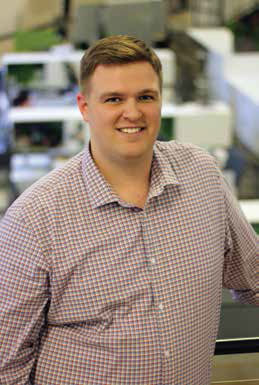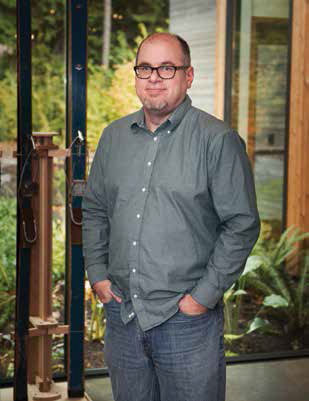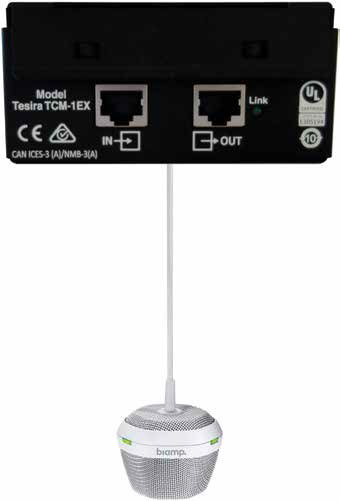Managing AV in Multipurpose Spaces

Workplace culture is changing. Team members are no longer boxed into cubicles or stuck to stationary monitors. Boardrooms will always be required for C-level and executive purposes, but interest is growing in BYOD-enabled, flexible spaces that pack a punch, doing double or triple duty. These multipurpose marvels—common among startups and growing businesses—should support real-time collaboration and more. On the multipurpose menu in 2018: all-hands meetings, presentations, team building, videoconferencing, Secret Santas, and (hopefully), karaoke. Driving these versatile spaces is audiovisual technology, but it must be easy to operate and versatile for users of all ages and skill levels. Multipurpose AV is a puzzle with many parts, but considering these essential factors will help you design and manage more successful spaces.
PLAN EARLY, BE REALISTIC
What technologies would be best suited to support the needs of the space and the group? Evaluate all germane options, but let the end goal influence your AV planning. What, specifically, are you trying to achieve in this multifunctional room? Conduct a thorough site survey, assessing current standards, and working with all appropriate stakeholders. Keep in mind that we’re experiencing a profound cultural shift. According to Forrester Research, more than half of North American and European companies are developing BYOD programs in response to workforce demand. Expect to accommodate more mobile-driven methodologies and workflows.
To meet evolving user needs, AV and IT providers need to be represented early in the design stage of new building planning. Room layout and location of the AV within the room, relative to loud HVAC vents, direct sun, or ambient light are only a few of the critical issues that need to be addressed during initial planning stages. Display location is not a quick fix. Pushing a CRT in on a rolling cart, ala NBC’s The Office, just won’t cut it. Displays need to easily viewable for all participants, including remote participants joining via VC.
ENABLE DYNAMIC COLLABORATION
If collaborative systems are integrated into multipurpose spaces, they need to enable real-time wired or wireless sharing. Whether the space is outfitted with fixed or modular furniture and raceways, or solutions like the Connectrac In-Carpet wireways that integrate with floor coverings, the technology should empower all users to dynamically contribute their best ideas. Just because it can be reconfigured doesn’t mean it can’t deliver on quality.

FLEXIBILITY IS KEY, BUT MAKE IT COHESIVE
A daily selection of features, industry news, and analysis for tech managers. Sign up below.
Shane Springer, CTS-I, CQT, AV/IT solutions architect with One Workplace, sees multipurpose trends playing out across the commercial spectrum, with the majority of projects in the San Francisco and greater Bay Area. In startups and in other spaces in the enterprise vertical, he commonly finds what he affectionately calls the “all-hands-ateria.”
“You may have a couple of projection screens at the front, and there may be some screens at the rear, with distributed audio throughout,” Springer said. “They may be doing background music some of the time. They may be doing breakout meetings when the room isn’t being used for an all-hands.”
Ultimately, Springer observed, there’s a high requirement for flexibility, but the AV must be coherent.
ACOUSTICS SHOULD NOT BE AN AFTERTHOUGHT
Acoustics should be a key consideration during multipurpose AV planning. If a multipurpose space is used heavily, the emphasis can tilt toward long-term, sustainable spaces. That means that hard and reverberant surfaces might be considered as they can withstand wear and tear. But hard surfaces can create acoustic nightmares, which is why many multipurpose areas end up sounding like high school cafeterias.
As with many other AV equations, Springer argued, equipment specifics for multipurpose spaces depend on the use case and user needs. The space must also embrace a human-centered design. “One size fits none” is frequently an answer in AV, but with acoustics, it’s even more nuanced. With hard surfaces, soft materials and acoustic panels are one approach.
“In a lot of cases, if people have an open ceiling—with cross beams, for example—you can add in hanging diffusers and acoustic treatments like that to fill the space,” Springer said. “It will be limited because it’s a dynamic space, but that is the starting point to try to get more soft materials in there.”

MUSICAL CHAIRS WITHOUT SACRIFICING INTELLIGIBILITY
Biamp’s product marketing manager, John Urban, noted that if a multipurpose space will experience regular physical reconfiguration, next-level features like presets and room combiners can provide significant assistance to the end user. When paired with intuitive control interfaces that allow users to select the appropriate room configuration for their meeting, presets will drive the AV system to make the adjustments instantly, correlating to the directives of that button push.
“Behind the scenes,” Urban said, “depending on the user’s selection, the room can be reconfigured in seconds. A sampling of scenarios includes changing input sources, re-routing the delivery of output audio or video streams, switching from a soft-codec call to sound reinforcement, and more. By the time you’re done moving chairs and tables around, the AV would have already been ready to accommodate that gathering.”

He also explained how Biamp’s new Beamtracking microphones are ideal for multipurpose spaces, because users can route the microphones individually or combine them depending on how the room’s being used. “Our mics can be daisy chained together,” he said, “so if you’ve got an air wall, with our Beamtracking mics you can have two meetings going simultaneously on each side of the wall, and route each audio stream independently. Open up the air wall for a combined all-hands company meeting, and you can combine the two microphones seamlessly.”
It’s essential to get the audio right everywhere, but especially in a multipurpose space. “As soon as the audio is bad, you notice it,” Urban said, “but when the audio is good, you don’t notice, and you can focus intently on the meeting at hand.”
AV OVER IP AND SOFTWARE APPROACHES
In the past, most investments were earmarked for hardware-based collaboration solutions. Endpoint devices like PTZ cameras, displays, microphones, and speakers are necessary hardware components, but they can also be managed via IP. Network-connected and software-based devices can also offer new levels of scalability. A cloud-based infrastructure can potentially adapt to future collaboration needs. Many tech managers are exploring software approaches because of the benefits of assignment, asset management, and the ability to add IP-enabled endpoints onto a network-based system.
Jason Fitzgerald, Gefen’s product manager, sees an uptick in the demand for AV over IP. He shared the example of a multipurpose space in a learning hospital: “They use that space not just for teaching and surgeries, but they also rent out the space to medical industry companies who might, for example, be debuting their latest knee cap or new medical devices.”

Fitzgerald also sees the need for flexible recording capabilities in multipurpose spaces. “It depends on what type the application is, but AV over IP is growing, as it allows users to bring in sources and move sources out of that room.
“I’ve seen people move an IP stream out, for an AV-over-IP application, in essence creating a live stream so they can broadcast beyond the confines of a local environment. There’s also the need for the basic function of an auto switch—just plugging something in and having it turn on, reliably, every single time.” He suggested that managers evaluate multipurpose solutions with recording and encoding capabilities as demand for video grows.
Ben Whitfield, an AV specialist at UNC Medical School, concurred. “In most rooms I do now, even rooms smaller than 50 seats, we have a ceiling microphone in place and a decent camera, with pan-tilt-zoom, in the room. That room can then function not only as a classroom or a meeting room, but it can be a distance learning setup or an interview room for new candidates. It becomes multifunctional and multipurpose.”
EXPAND AS NEEDED: THE BUILDING BLOCK APPROACH
With endless scenarios and available products for multipurpose spaces, tech managers can quickly become overwhelmed. Fitzgerald recommended starting with the basic hardwired functionality for switching in and out. “Or,” he said, “start with a BYOD unit that at least offers the capabilities of bringing in the wireless components as well as the hardware pieces, with a backend software connection.”
It’s important to empower users to share real-time data and use functions like Skype and WebEx, but the orbit can and should extend much further. “Bring the collaborative expectation from a local to a wide area,” Fitzgerald added.
He sees the advantage to Gefen’s building block approach. “An installation will often go beyond one single product,” he said. Gefen’s building block concept assumes iteration and the future utilization of new components. “To that end, one of Gefen’s biggest fortés is its broad range and diversity of products. Focus on an initial backbone to meet basic needs, but then expand out as needs evolve.”
INTELLIGENT AUTOMATION AND ADAPTABILITY
Dovetailing with John Urban’s concept of smart reconfiguration in multipurpose spaces is the rise of intelligent automation. Shane Springer added: “We’re ending up seeing spaces that need to have autotracking cameras, for example, so that you can use the space however you use the space without having to relearn the technology.”
With the proliferation of AV over IP and software-based solutions, tech managers can plan rooms for reliable real-time collaboration and the flexibility to adapt to new technologies. Because, ultimately, it is not a matter of if new AV will roll down the pipeline, it is a matter of when.
Margot Douaihy, Ph.D., is a lecturer at Franklin Pierce University.

